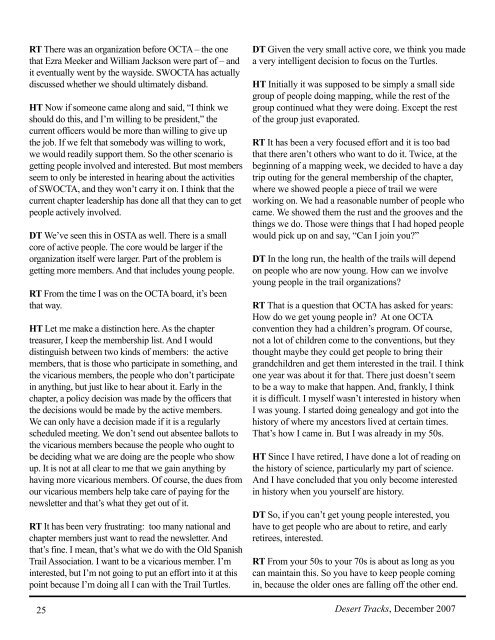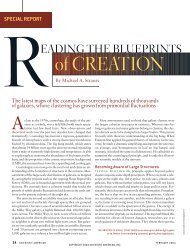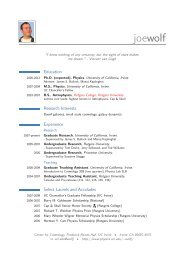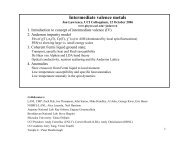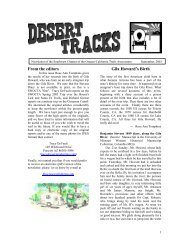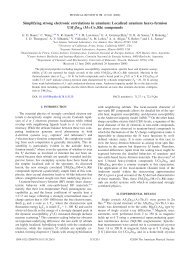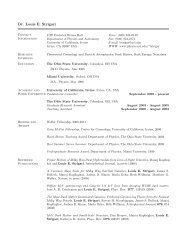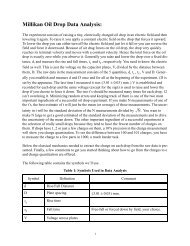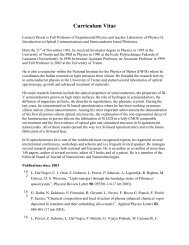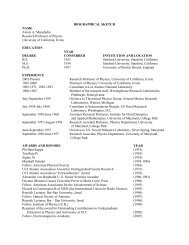Work on the Apache Pass Trail - Southern Trails Chapter
Work on the Apache Pass Trail - Southern Trails Chapter
Work on the Apache Pass Trail - Southern Trails Chapter
Create successful ePaper yourself
Turn your PDF publications into a flip-book with our unique Google optimized e-Paper software.
RT There was an organizati<strong>on</strong> before OCTA – <strong>the</strong> <strong>on</strong>e<br />
that Ezra Meeker and William Jacks<strong>on</strong> were part of – and<br />
it eventually went by <strong>the</strong> wayside. SWOCTA has actually<br />
discussed whe<strong>the</strong>r we should ultimately disband.<br />
HT Now if some<strong>on</strong>e came al<strong>on</strong>g and said, “I think we<br />
should do this, and I’m willing to be president,” <strong>the</strong><br />
current officers would be more than willing to give up<br />
<strong>the</strong> job. If we felt that somebody was willing to work,<br />
we would readily support <strong>the</strong>m. So <strong>the</strong> o<strong>the</strong>r scenario is<br />
getting people involved and interested. But most members<br />
seem to <strong>on</strong>ly be interested in hearing about <strong>the</strong> activities<br />
of SWOCTA, and <strong>the</strong>y w<strong>on</strong>’t carry it <strong>on</strong>. I think that <strong>the</strong><br />
current chapter leadership has d<strong>on</strong>e all that <strong>the</strong>y can to get<br />
people actively involved.<br />
DT We’ve seen this in OSTA as well. There is a small<br />
core of active people. The core would be larger if <strong>the</strong><br />
organizati<strong>on</strong> itself were larger. Part of <strong>the</strong> problem is<br />
getting more members. And that includes young people.<br />
RT From <strong>the</strong> time I was <strong>on</strong> <strong>the</strong> OCTA board, it’s been<br />
that way.<br />
HT Let me make a distincti<strong>on</strong> here. As <strong>the</strong> chapter<br />
treasurer, I keep <strong>the</strong> membership list. And I would<br />
distinguish between two kinds of members: <strong>the</strong> active<br />
members, that is those who participate in something, and<br />
<strong>the</strong> vicarious members, <strong>the</strong> people who d<strong>on</strong>’t participate<br />
in anything, but just like to hear about it. Early in <strong>the</strong><br />
chapter, a policy decisi<strong>on</strong> was made by <strong>the</strong> officers that<br />
<strong>the</strong> decisi<strong>on</strong>s would be made by <strong>the</strong> active members.<br />
We can <strong>on</strong>ly have a decisi<strong>on</strong> made if it is a regularly<br />
scheduled meeting. We d<strong>on</strong>’t send out absentee ballots to<br />
<strong>the</strong> vicarious members because <strong>the</strong> people who ought to<br />
be deciding what we are doing are <strong>the</strong> people who show<br />
up. It is not at all clear to me that we gain anything by<br />
having more vicarious members. Of course, <strong>the</strong> dues from<br />
our vicarious members help take care of paying for <strong>the</strong><br />
newsletter and that’s what <strong>the</strong>y get out of it.<br />
RT It has been very frustrating: too many nati<strong>on</strong>al and<br />
chapter members just want to read <strong>the</strong> newsletter. And<br />
that’s fine. I mean, that’s what we do with <strong>the</strong> Old Spanish<br />
<strong>Trail</strong> Associati<strong>on</strong>. I want to be a vicarious member. I’m<br />
interested, but I’m not going to put an effort into it at this<br />
point because I’m doing all I can with <strong>the</strong> <strong>Trail</strong> Turtles.<br />
25<br />
DT Given <strong>the</strong> very small active core, we think you made<br />
a very intelligent decisi<strong>on</strong> to focus <strong>on</strong> <strong>the</strong> Turtles.<br />
HT Initially it was supposed to be simply a small side<br />
group of people doing mapping, while <strong>the</strong> rest of <strong>the</strong><br />
group c<strong>on</strong>tinued what <strong>the</strong>y were doing. Except <strong>the</strong> rest<br />
of <strong>the</strong> group just evaporated.<br />
RT It has been a very focused effort and it is too bad<br />
that <strong>the</strong>re aren’t o<strong>the</strong>rs who want to do it. Twice, at <strong>the</strong><br />
beginning of a mapping week, we decided to have a day<br />
trip outing for <strong>the</strong> general membership of <strong>the</strong> chapter,<br />
where we showed people a piece of trail we were<br />
working <strong>on</strong>. We had a reas<strong>on</strong>able number of people who<br />
came. We showed <strong>the</strong>m <strong>the</strong> rust and <strong>the</strong> grooves and <strong>the</strong><br />
things we do. Those were things that I had hoped people<br />
would pick up <strong>on</strong> and say, “Can I join you?”<br />
DT In <strong>the</strong> l<strong>on</strong>g run, <strong>the</strong> health of <strong>the</strong> trails will depend<br />
<strong>on</strong> people who are now young. How can we involve<br />
young people in <strong>the</strong> trail organizati<strong>on</strong>s?<br />
RT That is a questi<strong>on</strong> that OCTA has asked for years:<br />
How do we get young people in? At <strong>on</strong>e OCTA<br />
c<strong>on</strong>venti<strong>on</strong> <strong>the</strong>y had a children’s program. Of course,<br />
not a lot of children come to <strong>the</strong> c<strong>on</strong>venti<strong>on</strong>s, but <strong>the</strong>y<br />
thought maybe <strong>the</strong>y could get people to bring <strong>the</strong>ir<br />
grandchildren and get <strong>the</strong>m interested in <strong>the</strong> trail. I think<br />
<strong>on</strong>e year was about it for that. There just doesn’t seem<br />
to be a way to make that happen. And, frankly, I think<br />
it is difficult. I myself wasn’t interested in history when<br />
I was young. I started doing genealogy and got into <strong>the</strong><br />
history of where my ancestors lived at certain times.<br />
That’s how I came in. But I was already in my 50s.<br />
HT Since I have retired, I have d<strong>on</strong>e a lot of reading <strong>on</strong><br />
<strong>the</strong> history of science, particularly my part of science.<br />
And I have c<strong>on</strong>cluded that you <strong>on</strong>ly become interested<br />
in history when you yourself are history.<br />
DT So, if you can’t get young people interested, you<br />
have to get people who are about to retire, and early<br />
retirees, interested.<br />
RT From your 50s to your 70s is about as l<strong>on</strong>g as you<br />
can maintain this. So you have to keep people coming<br />
in, because <strong>the</strong> older <strong>on</strong>es are falling off <strong>the</strong> o<strong>the</strong>r end.<br />
Desert Tracks, December 2007


